Auteur: Hans Hollestelle
Drukke dag
Op 8 april 1944 was het druk met vliegverkeer boven de Noordoostpolder. Er kwamen die dag rond 15:00 uur kort na elkaar twee Amerikaanse vliegtuigen neer in de Noordoostpolder. Een B-17 Flying Fortress bij Emmeloord en een B-24 Liberator bij Schokland.
[Lees ook: Het luchtgevecht tussen Joe Buland en Charly Willius, red.]
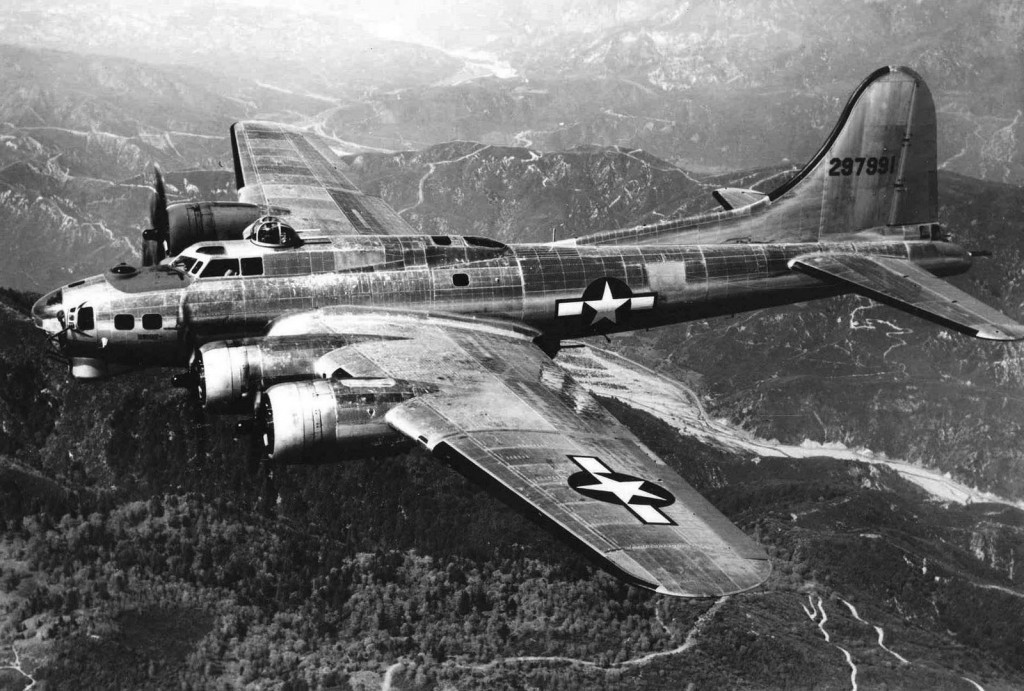
Beschoten
Bij Emmeloord kwam de B-17G Flying Fortress (#42–39856) “Wacky Woody” van piloot Russel Gecks neer op kavel M44. Het vliegtuig was boven het doel Rheine/Salzbergen, vlak over de grens bij Enschede, beschoten en geraakt door Duitse Flieger Abwehr Kanonen (FLAK). Ook was het beschoten door Duitse jachtvliegtuigen. Twee motoren waren uitgevallen en op de terugweg ook de derde motor. De bemanning gaf via de boordradio door aan hun thuisbasis, Snetterton Heath Airfield (United States Army Air Force (USAAF) Station 137), dat ze die basis niet meer zouden gaan halen.
Landen per parachute
Boven het IJsselmeer werd weer omgekeerd richting Duitsland. Eenmaal terug boven de Noordoostpolder besloten alle 10 bemanningsleden met hun parachute het toestel te verlaten. Hierna stortte het lege toestel op kavel M-44, iets ten noordoosten van Emmeloord neer. Alle bemanningsleden landden veilig met hun parachute in de uitgestrekte blubberige vlakte van de nog onontgonnen polder.
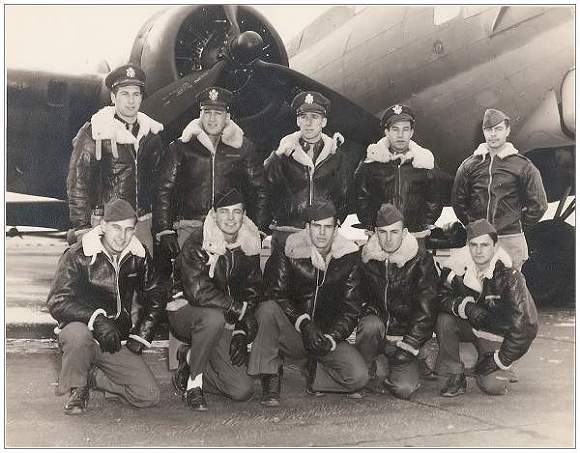
De bemanning
2nd Lt. – Piloot – Russell H. Gecks
2nd Lt. – Co-Piloot – Frank M. Deason
2nd Lt. – Navigator – Peter V. Lovero
S/Sgt. – Bommenrichte en neusschutter – Leland F. Welch
T/Sgt. – Engineer en bovenschutter – Richard E. Denny
T/Sgt. – Radio Operator – Clifton E. Hanley
S/Sgt. – Buikschutter – Leon H. Rademacher
S/Sgt. – Rechter zijschutter – Peter E. Miskinis
S/Sgt. – Linker zijschutter – Howard F. Jones
S/Sgt. – Staartschutter – Sam A. Polito
Peter Miskinis
Rechter zijschutter Peter Miskinis was ver van de anderen geland met zijn parachute. Hij was bij de luchtgevechten gewond geraakt en kon maar moeilijk lopen. Hij heeft zijn andere bemanningsleden na zijn landing niet meer gezien, maar heeft zich in zijn eentje weten te redden.
Het is hem gelukt om in de buurt van Urk hulp te vinden, hij werd naar Piet en Nellie Brouwer gebracht. Piet en Nellie hadden een kruidenierswinkel op Urk. Na een verblijf van 10 dagen (8-18 april 1944) op Urk werd Peter Miskinis per boot overgebracht naar Zaandijk in Noord-Holland. Hij verbleef in Zaandijk van 18 april 1944 tot 14 mei 1945. Dit was bij de heer en mevrouw H. de Koning (Melkhandel) aan de Oud-Heinstraat 40.
Vijf krijgsgevangen
De andere vijf bemanningsleden hadden minder geluk. De 10 parachutes die uit de lucht vielen waren in de wijde omtrek te zien geweest. Ook had het vliegtuigwrak flink in brand gestaan. Het kostte de Duitse Wehrmacht militairen gelegerd op Urk dan ook niet veel tijd om vijf bemanningsleden op te pakken.
Staartschutter Sam Polito, zijschutter Howard Jones, navigator Peter Lovero, neusschutter Leland Welsch en buikschutter Leon Rademachter. Alle vijf zaten de rest van de oorlog uit in krijgsgevangenkampen (o.a. Stalag Luft 17B Braunau Gneikendorf bij Krems in Oostenrijk).
Piloot Gecks en drie bemanningsleden
Piloot Russel Gecks en drie bemanningsleden wisten uit de handen van de speurende Duitsers te blijven. Met hulp van het verzet wist hij naar Vollenhove te komen waarna ze werden overgebracht naar Peter Jan van den Hurk in Meppel, een bekende pilotenhelper.
Vanuit Meppel werden ze per trein overgebracht naar Maastricht waar ze een week verbleven in de Maastrichtse Broodfabriek (MABRO). De MABRO was van Albert Dekker en zijn vrouw Marie, en was gevestigd in een 14e eeuws landhuis. Vervolgens werden ze clandestien naar België overgebracht naar Thomas Baltus in de plaats Prayon iets ten zuidoosten van de stad Luik. Over het spoor van hun ontsnappingsroute door Frankrijk zijn niet veel gegevens bekend.
Ontsnappingsroute van piloot Gecks en drie bemanningsleden naar bevrijd gebied
Nederland: Noordoostpolder – Vollenhove – Meppel – Zutphen – Warnsveld – Zutphen – Echt – Maastricht.
België: Slins – Roclenge Sur Geer – Fraipont – Luik – Slins – Herstal – Beffe – Porcheresse – Bagimont.
Frankrijk: Gespunsart – Arreux – l’Echelle – Fraillicourt – Renneville – Auménancourt-le-Petit.
Ooggetuigeverslag na de oorlog door Flight Engineer Dick Denny
My parachute was up front near the top turret. The men in the back had their chutes on, they jumped, along with the navigator and the bombardier. Navigator 2Lt. Peter V. Lavero (POW), Bombardier S/Sgt. Leland F. Welch (POW), Rear Waist Gunner S/Sgt. Peter Miskinis (EVD, via Urk), Left Waist Gunner S/Sgt Howard F Jones (POW), Ball Turret Gunner: S/Sgt. Leon H. Rademacher (POW), Tailgunner S/Sgt. Sam A. Polito (POW). The first six to jump were captured by the Germans and spent the rest of their war days in a German prison camp. This was confirmed by visits with two of them after the war.
[Apparantly Sgt. Denny and his two collegues after the war were unknown to the fact that not six, but five men were captured by the Germans. Of the six men that jumped Sgt. Miskinis evaded also. He was hidden for 3 weeks in the nearby village of Urk, in a cellar under the shop of Piet Brouwer and also under the care of another pilot helper named Lub (Lubbert) Hoekman, [Dit moet zijn Pieter Hakvoort; red] see photos of him and his parents with Miskinis sitting at the tabel in civilian clothes. Peter Miskinis was wounded in a leg and was brought by the underground by boat to Zaandijk (near Amsterdam) at the end of April 1944, where he spent the rest of the war hiding (until May 1945).
Both Piet Brouwer and Lub Hoekman [Dit moet zijn Pieter Hakvoort; red] were arrested in October 1944 and paid with their lives in Nazi concentration camps.
Back to Sgt. Denny in the aircraft
I made the trip to the front near the top turret were my parachute was, and I put it on as I went back to the waist door of the plane as soon as I entered the radio room. Hanley was ready, so he jumped, and I was to follow him. Looking to the front I saw Lt. Gecks go out the bomb bay. The rest had jumped, that left me alone on the plane. I saw the ground about 7000 ft. below, I jumped. […] The jump was completed and I survived.
A new view of Europe
The place where I landed, in Holland, would normally be under water, but the land had recently been reclaimed. Later we learned that to do this they measure off a square mile, build a dike and pump the water out. No trees had been planted, it was flat and dry as the panhandle of Texas.
A droning noise warned me to take cover. I had been warned that Germans sent out small planes like Piper Cubs to look for those who were shot down. […] The searcher flew on and we four, Gecks, ‘Gregrow‘, Hanley and myself came out of hiding and soon were together. (Pilot 2Lt. Russel H. Gecks; Co-Pilot ‘Gregrow‘ (= 2Lt. Frank W. Deason); Engineer T/Sgt. Richard (Dick) E. Denny; Radio Operator T/Sgt. Clifton E. Hanley).
As I looked up, I saw the B-17’s heading home. Standing in an open field, we were confronted with the question. “What next?” The small plane had left and there seemed to be no one else around. Should we walk north and hope to catch a boat to Sweden? Should we go south and hope to make our way out through Spain? These are tough questions with no easy answer.[…]
We were hoping that somehow we could meet the Dutch underground, who would help us on our journey, to escape back to England. But night was approaching and we had spotted a small village about two miles away. So we walked within two blocks of it, stopping by a canal. […] We lay quietly on the side and watched them pass, wondering if they were looking for the four airmen that had not been captured. They were speaking in guttural tones, with a sense of humor, for we heard them laughing as they passed about 15 feet [5 m, red.] from us.
After they had passed we continued on into the village, noting that there was a light in only one home, but no lights in the rest of the village. Hanley and I cautiously approached the lighted house and were delighted to find it empty for the caretaker of the village had gone some place for the Easter weekend.
[…]
Walking south brought us to the canal, where we had hid the previous night. The canal was quite wide and Hanley could not swim, but as we looked east, about a mile up the canal was a ferry boat. We noticed two figures close by the boat, but seeing that we outnumbered them we went towards them… still dressed in our flying suits! […] Our helpers left to go to town, returning with a car after dark to take us to the village of Espel, where we had supper.
About 10:00 PM (22:00 uur) we started out on bicycles for the small town of Marknesse. Being aware of the German patrols, we watched as one man rode about a half mile ahead of us, using a flashlight to signal the presence of German soldiers, giving us a chance to escape if necessary. By midnight we arrived, exhausted, but excited to be taking steps in some direction rather than just sitting.
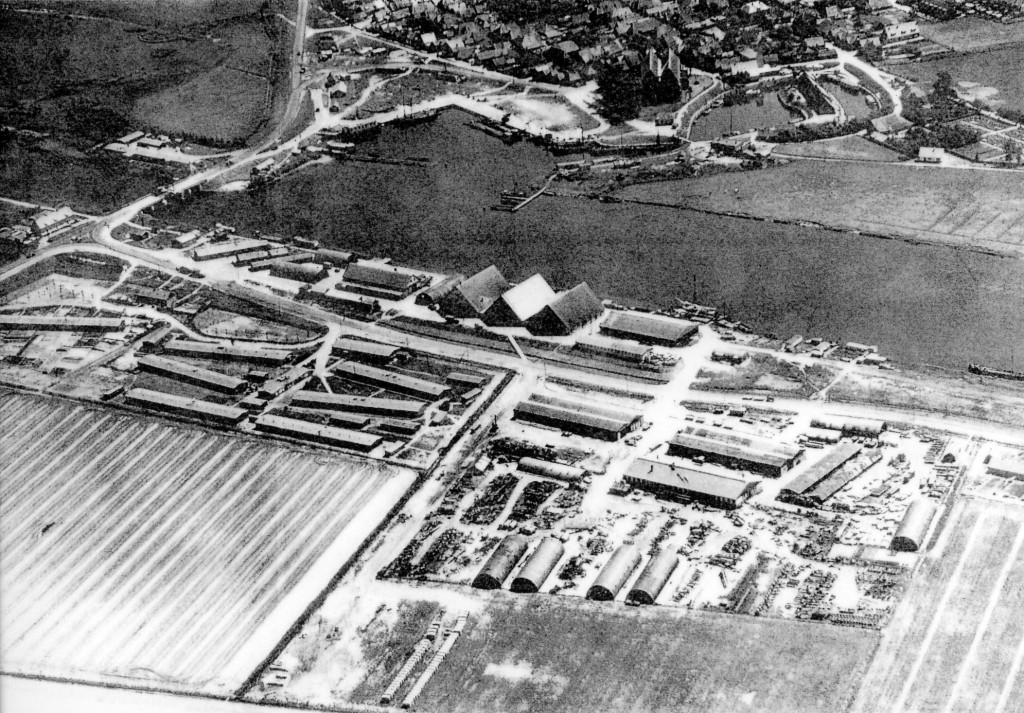
On the first morning in Marknesse we were all four measured for new clothes so that no one could tell us from the rest of the population except for our height. All four of us were at least six foot tall and lt. Gecks was 6’4”. Our new shoes were not the most comfortable. In addition we were each issued a Carte d’Identité. My name was Jacques Pierre Louis Dupont.
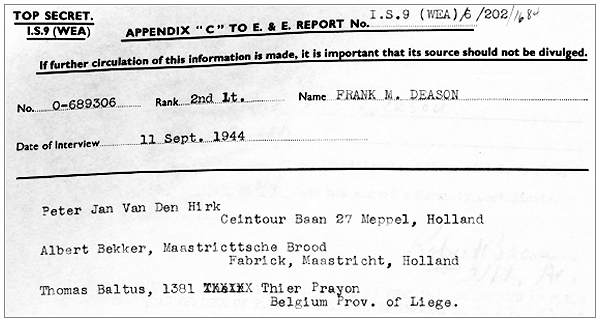
On to Maastricht
After 4 days we were ready for the next step, which was to leave the home and follow a leader about 75 -100 ft. behind him. And to be sure to do exactly as he did. Tickets to the train ride from Meppel to Zwolle had been given to us at the house, so it didn’t seem to difficult to follow his example.
We had been paired off, Hanley and I first, with Gecks and Gregrow following a short way behind. As we approached the train station we walked along as we owned the place. German soldiers were all around us, they didn’t know we were the enemy in their midst. […] We stood all the way to Zwolle. At Zwolle our leader stepped off, followed by us. He walked very briskly and we almost had to run to keep up. His mission was to lead the four of us to a home about four miles from the station. There were people everywhere and no one paid us any attention. Finally we all arrived safely.
After a week, the man returned to take us to the next step, a train ride to a small village north of Maastricht. The ride was a repeat of the first one, again without incident. Night had fallen when we entered the village of Linne. […]After some nights we took the train to Maastricht. Meeting us at the station was another new leader, who led us to a castle near the Belgium-Holland border. Maastricht was so densely populated that we could freely move about as we grew accustomed to the place.
After about 9 days we gathered in a group of 10-12 evadees and followed a lame smuggler who plied his trade by going through a cave between the two countries [de mergelgrotten, red.] After 45 minutes walking in the darkness in the middle of the mountain, known only to those who went this way, he raised his lantern and told us to look up. […]At the other end of the tunnel the smuggler laughingly told the tunnel was only 45 feet long.
[Cométe-line: ze passeerden naar België op 16-04-1944 via de tunnel van Adolphe van Belleghen in Maaseik bij Petit-Lanaye. De datum lijkt me niet correct (8 dagen na crash)]
Hello Belgium
We walked on on the other side and as we broke forth from the bowels of the mountain, we found ourselves standing on a ledge overlooking a magnificent valley of the Meuse river in moonlight. Immediately we paired off again, with Gecks and Gregrow going down one road, following a different man who was from that particular part of Belgium, and this was the last time I saw them.
Bronnen
Boek:
As life Unfolds
Auteur: Dick Denny [Flight Engineer ]
Websites:
www.teunispats.nl
www.commons.wikimedia.org
www.evasioncomete.org
www.americanairmuseum.com
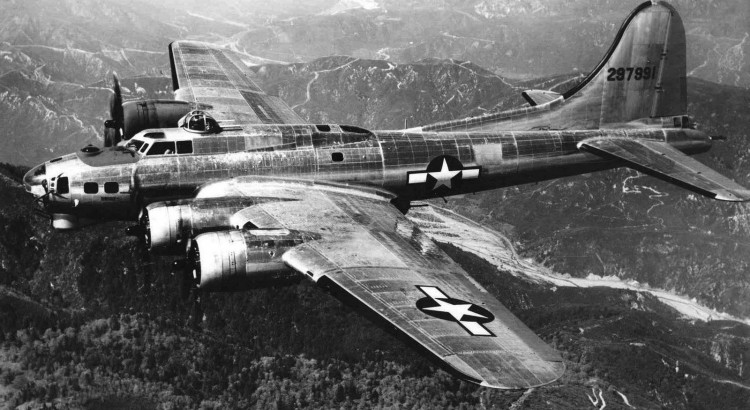

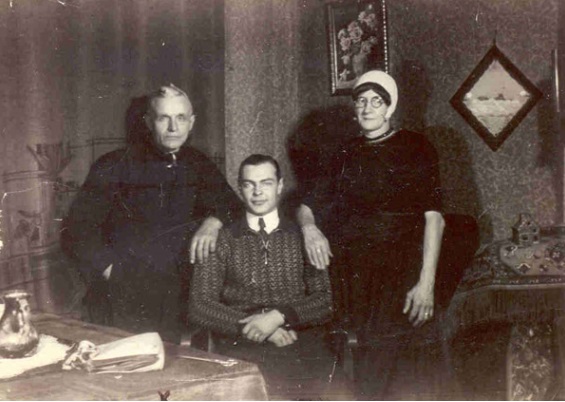



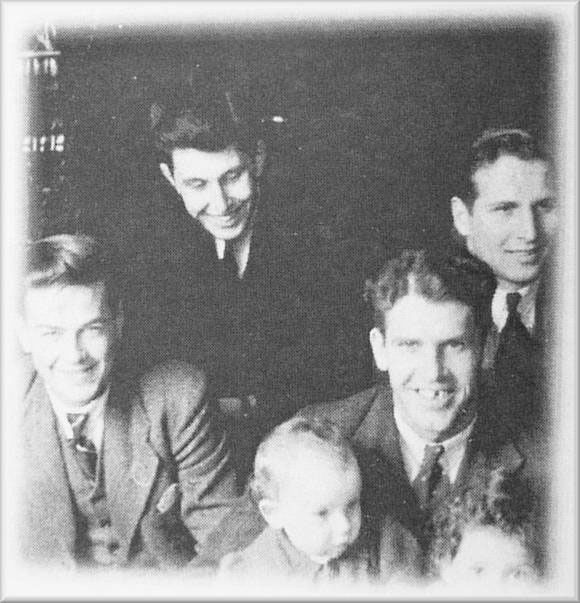

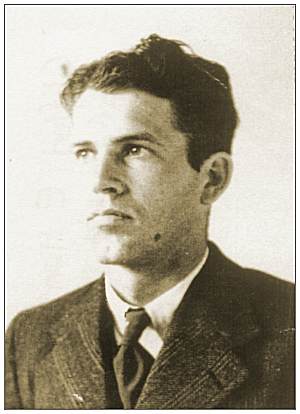
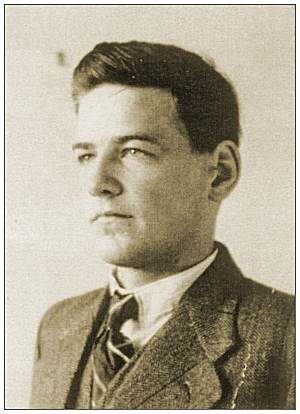
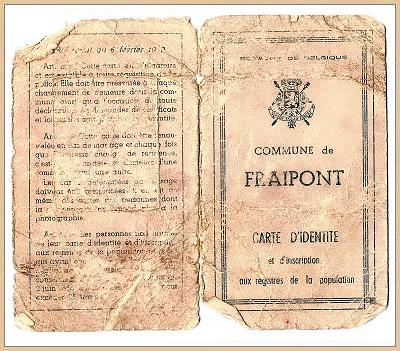
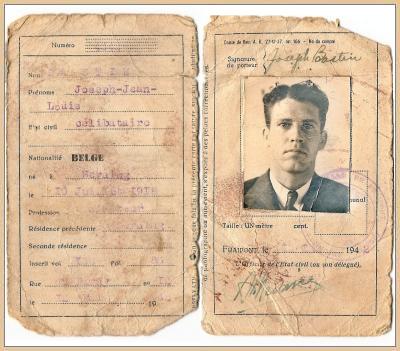
Hulde aan de verzetsmensen die deze piloten hebben willen helpen. Niet alleen stelden zij hun leven in de waag maar ook vastbesloten waren om in de illegaliteit te werken in de hoop om niet verraden te worden door collaborateurs en ook zeer veel respect voor de piloten en vele andere militairen waarvan velen van hen het leven hebben gelaten om de Duitsers te dwingen tot overgave en ons Nederlands volk zijn vrijheid terug te geven. Ik ben zelf 64, en ik heb een graf mogen adopteren van een Amerikaans pvt. En waarvan de familie waarmee ik in contact sta heel blij is dat hun overleden broer in ere wordt gehouden. Ik spreek de hoop uit dat er nooit meer zoiets zal plaatsvinden!